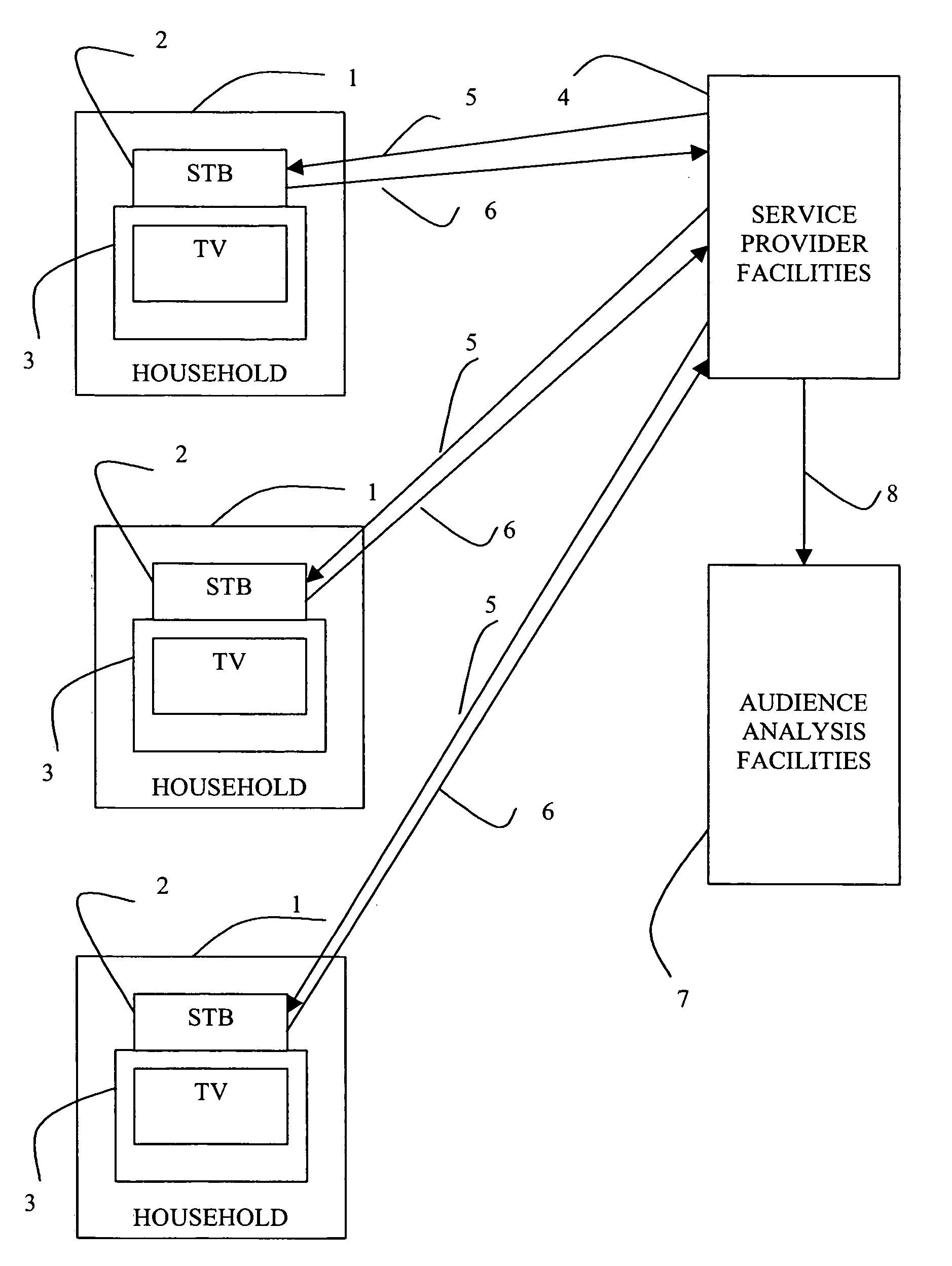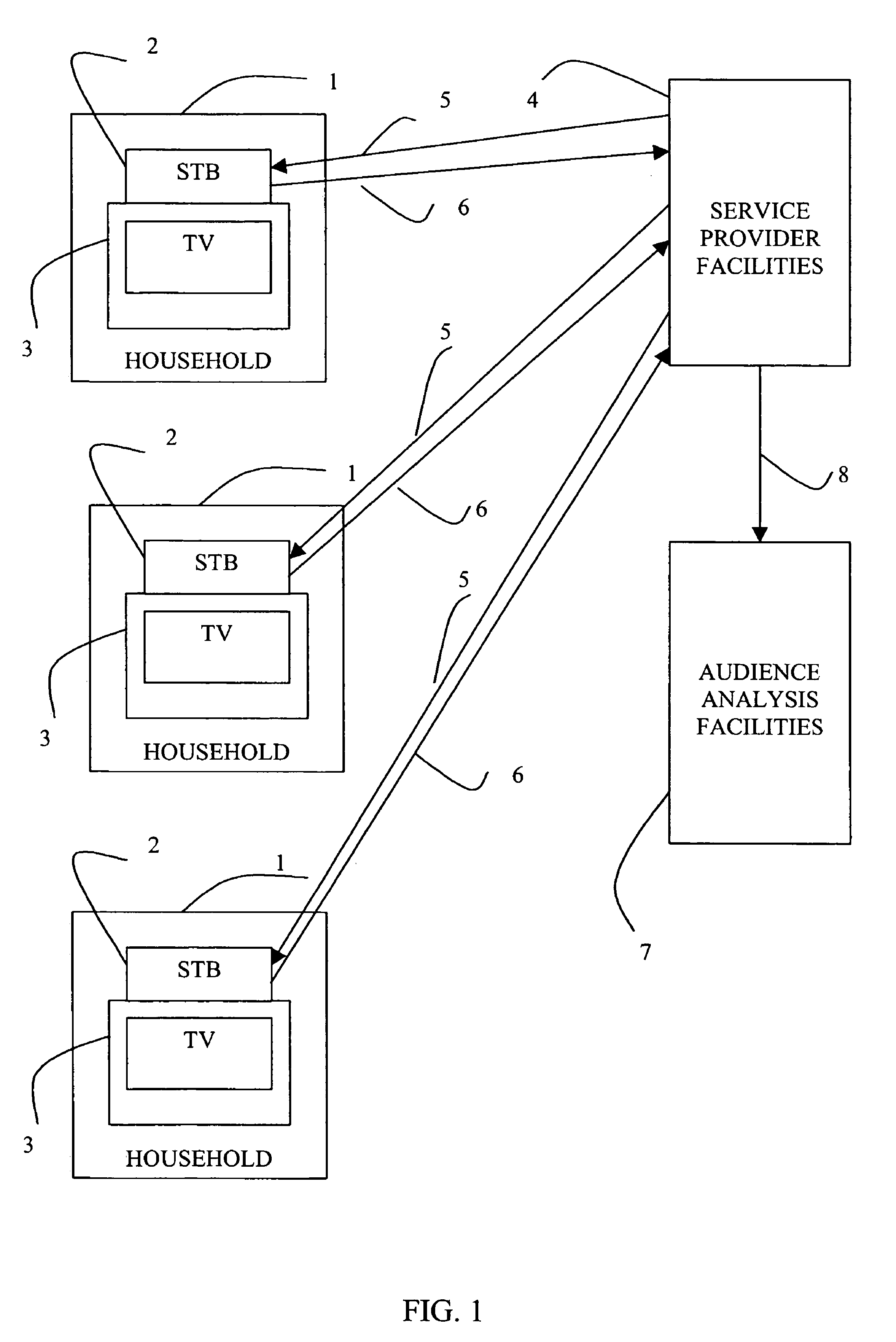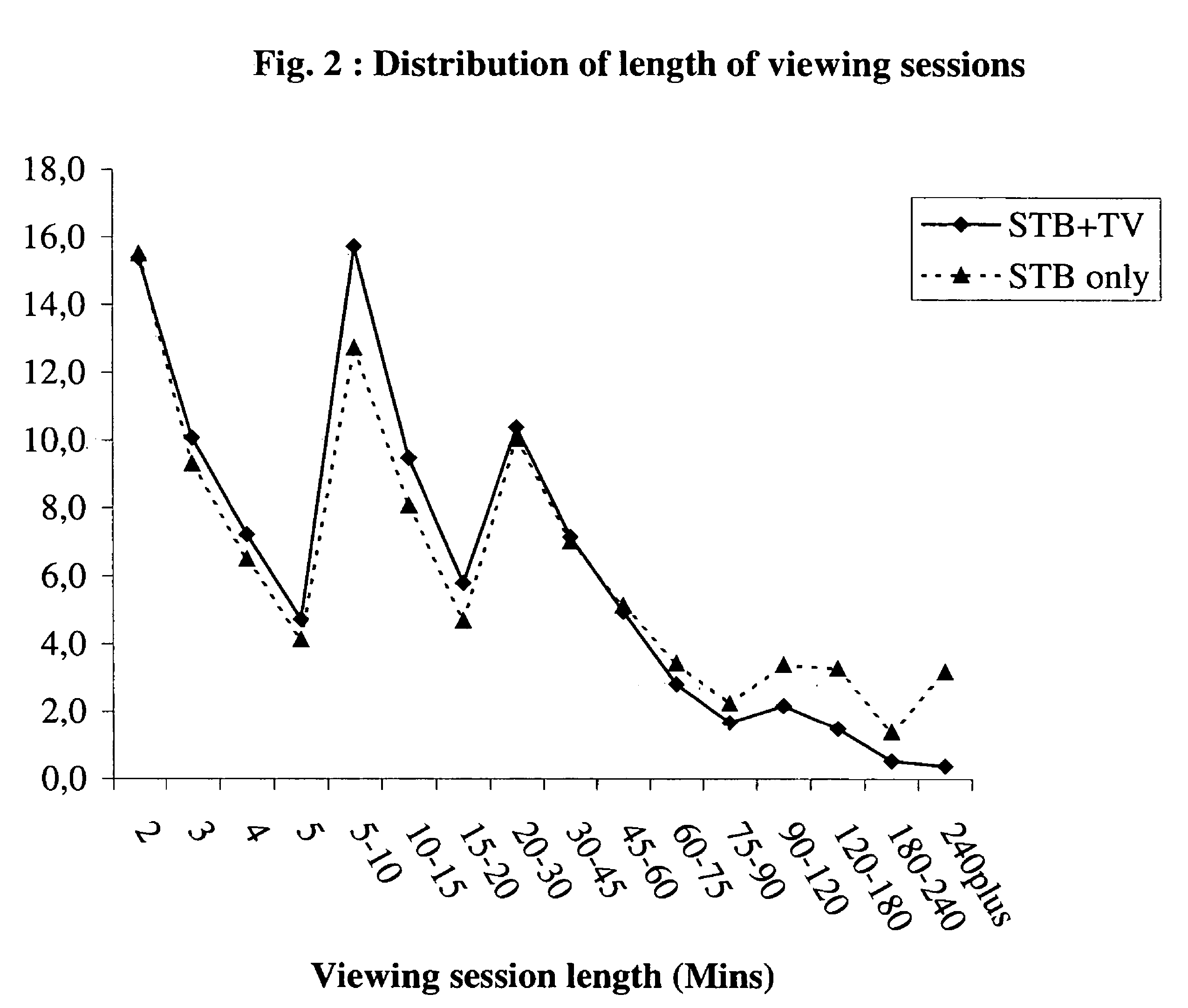Analysing viewing data to estimate audience participation
a technology of audience participation and viewing data, applied in the field of audience analysis, can solve the problems of providing, or almost certainly providing, a false indication of actual viewing, and the data from stb's is of itself insufficient to allow detailed audience analysis, so as to improve the value and utility of audience analysis. the effect of data
- Summary
- Abstract
- Description
- Claims
- Application Information
AI Technical Summary
Benefits of technology
Problems solved by technology
Method used
Image
Examples
Embodiment Construction
on / Set off (SoSo) detector which may be employed in accordance with the present invention;
[0035]FIG. 9 schematically illustrates a form of Set on / Set off (SoSo) detector and individual viewer tag system which may be employed in accordance with the present invention;
[0036]FIG. 10 schematically illustrates a further form of Set on / Set off (SoSo) detector and individual viewer tag system which may be employed in accordance with the present invention;
[0037]FIG. 11 schematically illustrates an embodiment of individual viewer tag which may be employed in accordance with the present invention, and schematically illustrates a docking station for the tag; and
[0038]FIG. 12 schematically illustrates an alternative form of Set on / Set off (SoSo) detector and individual viewer tag system which may be employed in accordance with the present invention.
DETAILED DESCRIPTION
[0039]FIG. 1 schematically illustrates a system in which multi-channel program services, for reception via digital cable and / or s...
PUM
 Login to View More
Login to View More Abstract
Description
Claims
Application Information
 Login to View More
Login to View More - R&D
- Intellectual Property
- Life Sciences
- Materials
- Tech Scout
- Unparalleled Data Quality
- Higher Quality Content
- 60% Fewer Hallucinations
Browse by: Latest US Patents, China's latest patents, Technical Efficacy Thesaurus, Application Domain, Technology Topic, Popular Technical Reports.
© 2025 PatSnap. All rights reserved.Legal|Privacy policy|Modern Slavery Act Transparency Statement|Sitemap|About US| Contact US: help@patsnap.com



